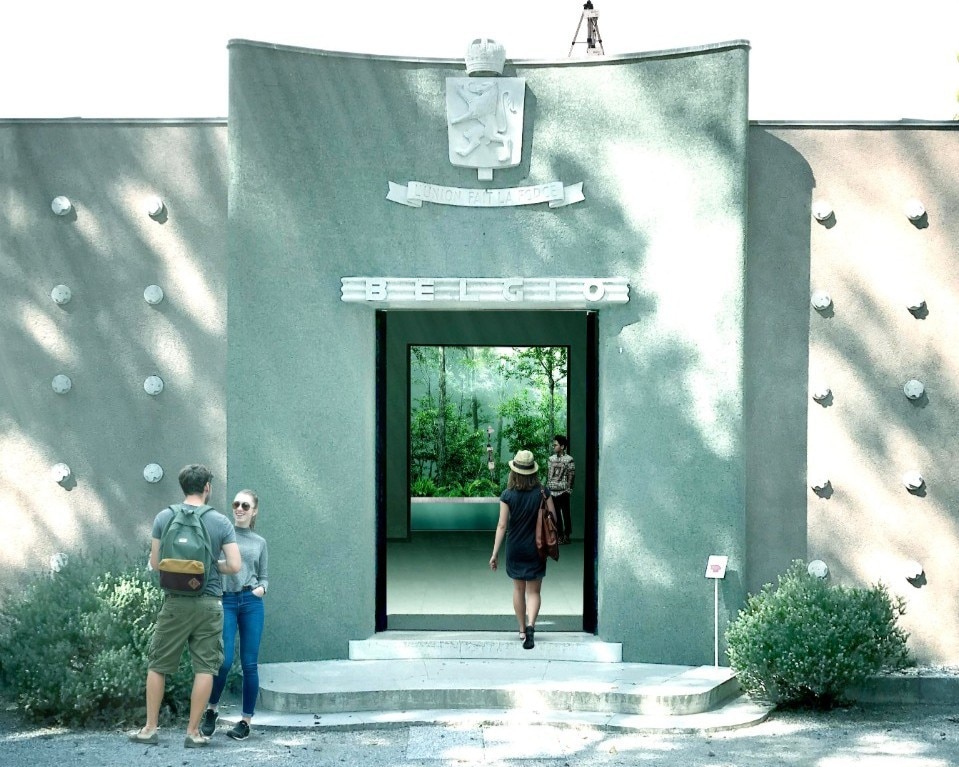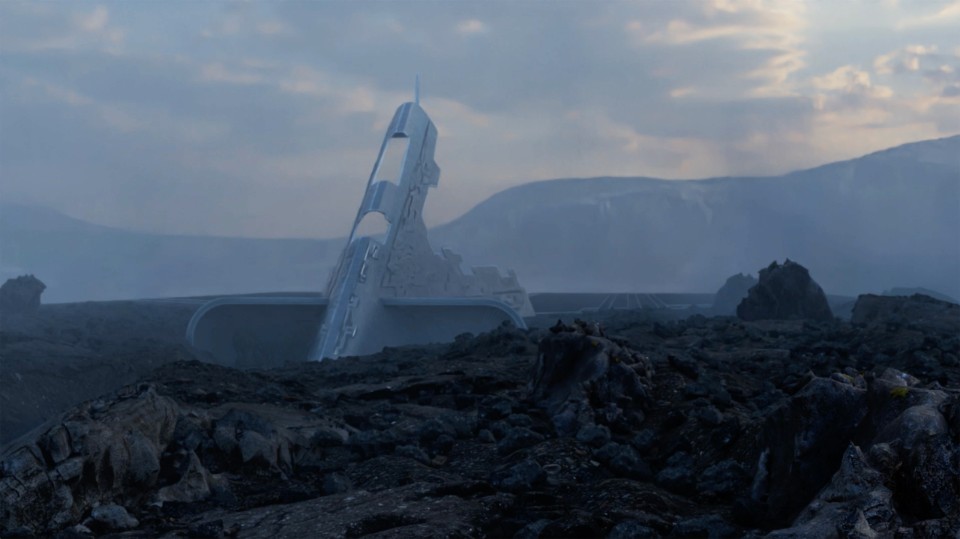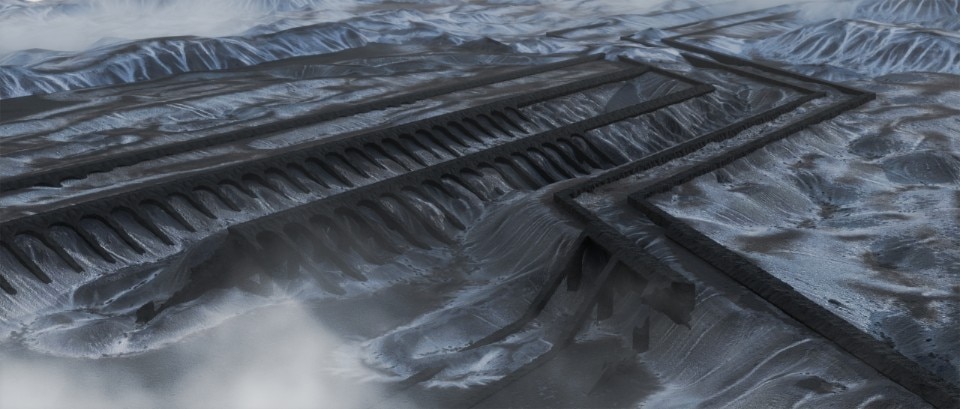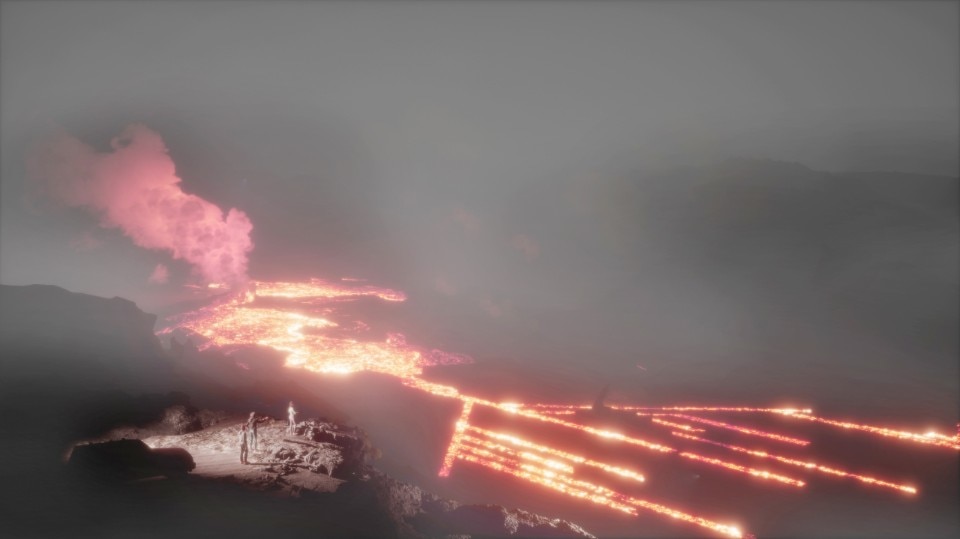“Intelligens. Natural. Artificial. Collective.” This is the title of the 19th. International Architecture Exhibition at the Venice Biennale 2025 curated by Carlo Ratti, which opens on 10 May and which, as usual, will take place in the Arsenale area, in the Giardini and in a series of side events scattered around the city.
The word 'intelligens', as Carlo Ratti has already explained, alludes to a double meaning: on the one hand, it emphasises the reference to the gens (i.e. to humans), and on the other, it aims at the combination of the three intelligences on which this edition is based: natural, artificial and collective intelligence.
But the protagonist of the Biennial's inaugural conference was not AI, as one might have expected, but climate change. In the light of the events that have hit Los Angeles and Valencia this year, Venice, "the most vulnerable city from a climatic point of view", says Ratti, is becoming a laboratory for research and design of the places of the future. "The first fundamental question is: what will the climate be like in 2050? Or even 2150? This is the starting point for everything we do in architecture."
With the central pavilion of the Giardini, historically the site of the "Curator's Exhibition", closed for renovation, Ratti will be using the spaces of the Corderie in the Arsenale to host projects that address issues of sustainability and design intelligence. These include a project by Kengo Kuma, humanoid robots that will change the future of construction, and new materials from around the world.
This year, the Biennale will also take place in the city, with projects by the Norman Foster Foundation and Diller Scofidio + Renfro on the theme of water, which is central to Venice.
The partnership between the Biennale and the V&A in London, consolidated over the last nine years, is renewed with the exhibition "On Storage". "Margherissima", in Mestre, which focuses on the Marghera area and the contaminated land near the Ponte della Libertà.
Finally, we can't forget the national pavilions in the Biennial gardens, with 4 new participants: the Republic of Azerbaijan, the Sultanate of Oman, Qatar and Togo. Some of the participating countries have already revealed what we can expect from the installations in this edition.
Italian Pavilion
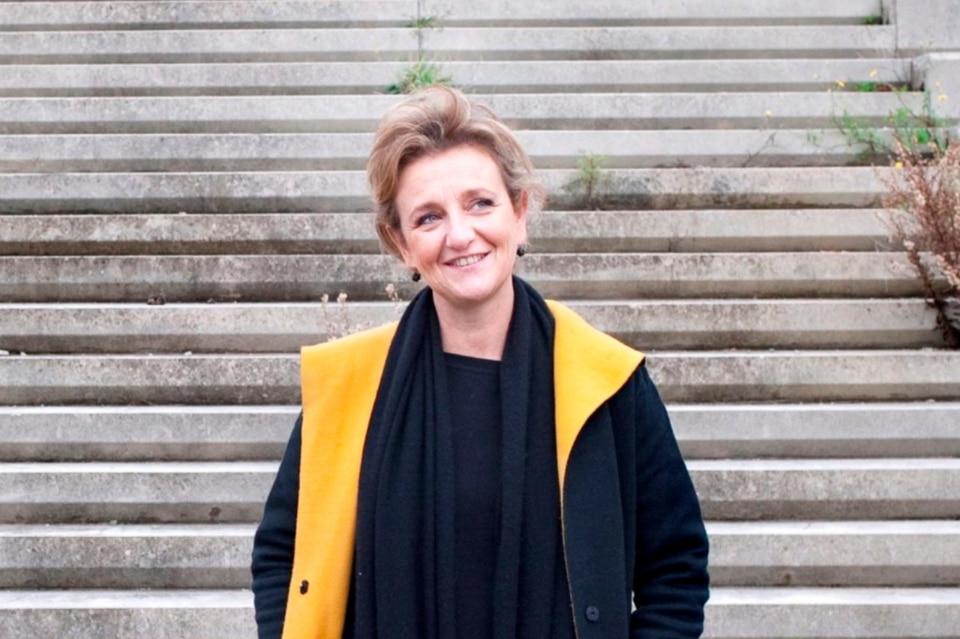
The project "Terræ Aquæ. Italy and the Intelligence of the Sea" by Guendalina Salimei has been chosen to curate the Italian Pavilion. The Ministry of Culture asked for a "particularly innovative and unconventional vision", and indeed Salimei offers a completely different perspective to the one we are used to: instead of looking at the sea from the land, she proposes to look at the land from the sea.
Like Carlo Ratti, Salimei has launched an open call to architects and other experts to gather contributions on rethinking the relationship between land and sea in coastal and port areas. She has already explored these themes in her recent development of Messina's new waterfront.
Rooted in her work as a designer and professor, her approach invites participants to imagine the 'shape of the sea', offering new insights for future projects.
Germany
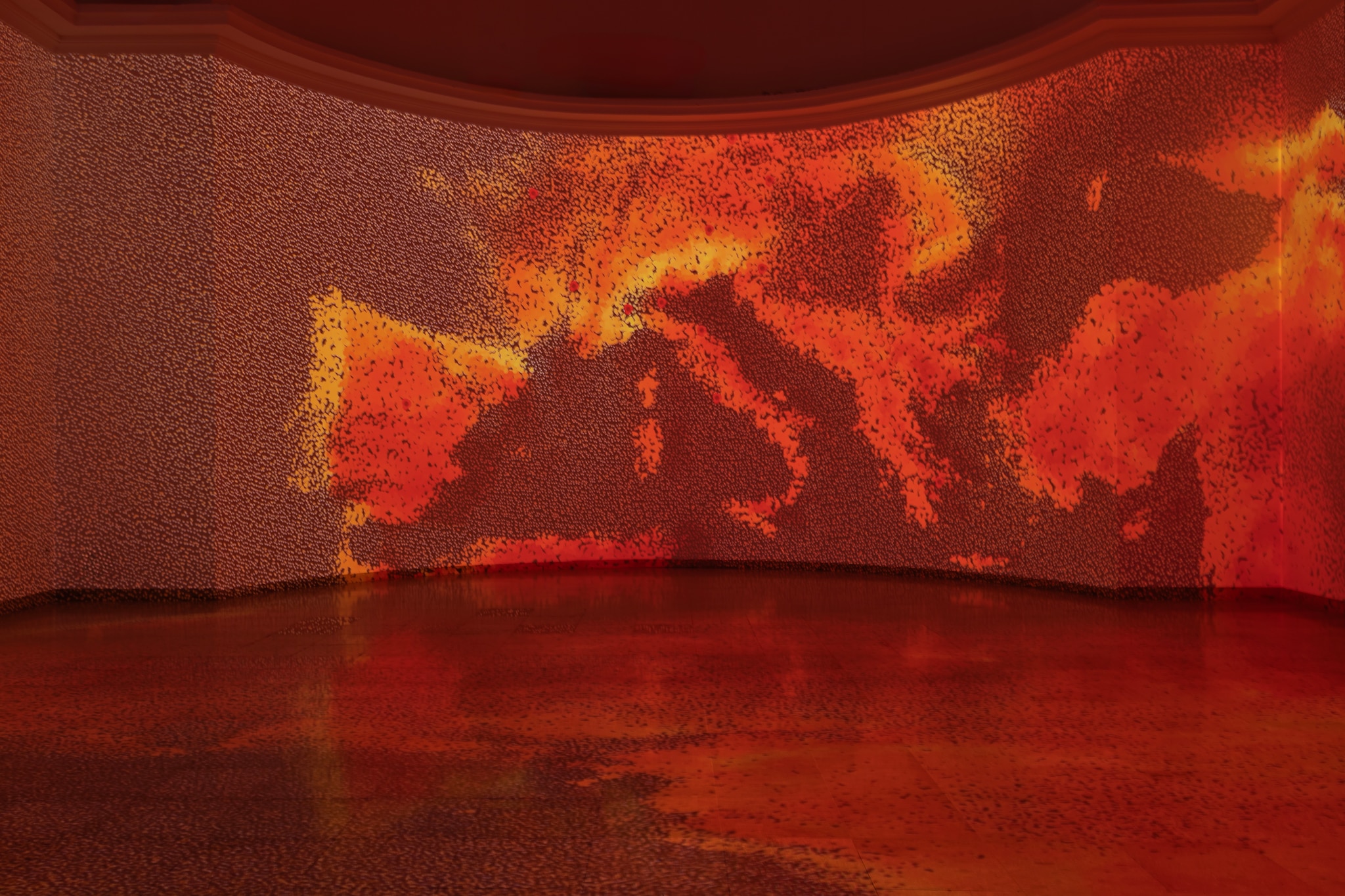
 View gallery
View gallery
"The world stands at a crossroads. It seems like all of its systems have become stressed simultaneously – including our cities. In extreme weather events, the vulnerability of urban spaces becomes very apparent." These opening words introduce the German Pavilion, known for its consistently thought-provoking projects at previous Biennales. "StressTest will focus on concerns about climate change and allow visitors to experience extreme heat first-hand, reinforcing the urgency of action. At the same time, the exhibition will present solutions for resilient urban planning.
Iceland

 View gallery
View gallery
Can destruction be a means of creation? According to the Icelandic Pavilion, the answer is yes.
The 'Lavaforming' project, led by architect Arnhildur Pálmadóttir, founder of s.ap architects, proposes an innovative approach: the use of controlled lava flows to produce sustainable building materials. Rather than seeing lava as a destructive force, the exhibition presents it as a valuable resource that can significantly reduce the environmental impact of building materials. It takes advantage of Iceland's unique geological conditions and volcanic activity to realise this vision.
Portugal

 View gallery
View gallery
"Paraíso, Hoje" is the title of the exhibition hosted at Fondaco Marcello. This year, it focuses on the contrast between Portugal's coastal area, where there is growing pressure on the coast due to uncontrolled urbanisation, real estate speculation and tourist overload, and the depopulation of the hinterland, which is becoming increasingly marginalised and exploited for intensive farming. "Despite the ongoing social contrasts and conflicts, it is important to recognise the positive aspects of the present while maintaining our commitment to building a better future," commented the curators, who will also hold a series of debates on this theme alongside the exhibition.
Denmark

 View gallery
View gallery

Denmark Pavilion
Courtesy Carl Brummer (1864-1953) architect, The Royal Library – The Art Library

Denmark Pavilion
Courtesy Carl Brummer (1864-1953) architect, The Royal Library – The Art Library
Perhaps inspired by Germany's approach in recent years - where the pavilion structure itself became an integral part of the exhibition - Denmark's pavilion will serve as a 1:1 case study in resource reuse. Instead of creating something new, the exhibition will focus on the practical maintenance of the existing building. The exhibition "Build of Site: Building Upon the World Without Building Anew', has a clear message.
""We've already created everything we need. That's why we must be better at understanding and finding value in what already exists," says curator Søren Pihlmann. His research examines the historic pavilion complex, originally designed by Carl Brummer (1932) and later extended by Peter Koch (1958), to explore how to optimise the use of existing materials.
Argentina

 View gallery
View gallery
A different take on contemporary architecture: this year, the Argentine Pavilion presents 'Siestario', a space that invites visitors to pause and reflect on the relationship between time and architecture. The experience of the siesta (afternoon nap) becomes a metaphor for the need to slow down. A giant inflatable structure will occupy the entire pavilion and serve as a resting space.
The installation is inspired by the silo bag, a temporary storage system widely used in agriculture, and symbolises Argentina's countryside and economy. The winning project was designed by architects Juan Manuel Pachué and Marco Zampieron, in collaboration with Brian Ejsmont.
U.S.

 View gallery
View gallery
This year, the United States Pavilion explores the theme of the porch, an essential element of American culture. The exhibition, "PORCH: An Architecture of Generosity," invites visitors to consider porches as spaces of connection and interaction. The pavilion itself - designed in 1930 in the neoclassical style by William Adams Delano and Chester Holmes Aldrich - will be transformed into a gathering space.
Inside, the exhibition will showcase some 50 projects from across the United States, both recent and historic.
Brazil

 View gallery
View gallery
After winning the Golden Lion at the last Architecture Biennale with "Terra [Earth]", Brazil returns with an interdisciplinary exhibition curated by the Plano Coletivo collective. The 2025 Brazil Pavilion will weave together architecture, nature and social infrastructure, drawing inspiration from both Amazonian ancestral practices and contemporary strategies that integrate society, urban spaces and the environment.
The exhibition will explore the role of collective intelligence in rethinking housing and urban life in response to today's socio-environmental crises.
Belgium

 View gallery
View gallery
The Belgian pavilion focuses on the role of vegetation in architecture and how plants can significantly regulate the temperature of our built environment, an increasingly critical factor in an uncertain future.
The 'Building Biospheres' exhibition is curated by a team including landscape architect Bas Smets, climatologist Valerie Trouet and biologist Stefano Mancuso. The project highlights the need to rethink nature as an active component of architectural design rather than a passive element, integrating 'plant intelligence' into the built environment.
Qatar

 View gallery
View gallery

Qatar Pavilion
Ajmal Maiwandi, Chihilston Garden and Palace Rehabilitation, Kabul, 2015–2018
Photo Simon Norfolk

Qatar Pavilion
Ahmed Hossam Saafan, Dawar El Ezba Cultural Center, Cairo, completed in 2019
© Ahmed Hossam Saafan

Qatar Pavilion
Abeer Seikaly, Weaving a Home, Tent Al-Namara overlooking the Dead Sea, Jordan, 2020
© Abeer Seikaly

Qatar Pavilion
Marina Tabassum, Bait Ur Rouf Mosque, Dhaka, completed in 2012.
© Rajesh Vora

Qatar Pavilion
Aziza Chaouni, Sidi Harazem Bath Complex Rehabilitation, 2019– ongoing
© Aziza Chaouni. Photo Youness Bounhar

Qatar Pavilion
Nayyar Ali Dada, Alhamra Arts Council, Lahore, 1978–1981
© Qatar Museums, Noorulain Ali 2024

Qatar Pavilion
Balkrishna Doshi, Vidhyadhar Nagar Vignette, 1985.
© Vastu Shilpa Foundation / Studio Sangath

Qatar Pavilion
Hassan Fathy, Hamid Seif al-Nasr Rest House, 1944.
© Rare Books and Special Collections Library, The American University in Cairo

Qatar Pavilion
Rizvi Hassan, Hindupara Community Centre, Rohingya, completed in 2019
Courtesy Rizvi Hassan

Qatar Pavilion
Rizvi Hassan, Hindupara Community Centre, Rohingya, completed in 2019
Courtesy Rizvi Hassan

Qatar Pavilion
Heneghan Peng Architects, Palestinian Museum, completed in 2016
© Aga Khan Trust for Culture. Photo Cemal Emden 9

Qatar Pavilion
DAAZ Office, Jadgal Elementary School, 2017–2020
Courtesy DAAZ. Photo Deed Studio

Qatar Pavilion
Ajmal Maiwandi, Chihilston Garden and Palace Rehabilitation, Kabul, 2015–2018
Photo Simon Norfolk

Qatar Pavilion
Ahmed Hossam Saafan, Dawar El Ezba Cultural Center, Cairo, completed in 2019
© Ahmed Hossam Saafan

Qatar Pavilion
Abeer Seikaly, Weaving a Home, Tent Al-Namara overlooking the Dead Sea, Jordan, 2020
© Abeer Seikaly

Qatar Pavilion
Marina Tabassum, Bait Ur Rouf Mosque, Dhaka, completed in 2012.
© Rajesh Vora

Qatar Pavilion
Aziza Chaouni, Sidi Harazem Bath Complex Rehabilitation, 2019– ongoing
© Aziza Chaouni. Photo Youness Bounhar

Qatar Pavilion
Nayyar Ali Dada, Alhamra Arts Council, Lahore, 1978–1981
© Qatar Museums, Noorulain Ali 2024

Qatar Pavilion
Balkrishna Doshi, Vidhyadhar Nagar Vignette, 1985.
© Vastu Shilpa Foundation / Studio Sangath

Qatar Pavilion
Hassan Fathy, Hamid Seif al-Nasr Rest House, 1944.
© Rare Books and Special Collections Library, The American University in Cairo

Qatar Pavilion
Rizvi Hassan, Hindupara Community Centre, Rohingya, completed in 2019
Courtesy Rizvi Hassan

Qatar Pavilion
Rizvi Hassan, Hindupara Community Centre, Rohingya, completed in 2019
Courtesy Rizvi Hassan

Qatar Pavilion
Heneghan Peng Architects, Palestinian Museum, completed in 2016
© Aga Khan Trust for Culture. Photo Cemal Emden 9

Qatar Pavilion
DAAZ Office, Jadgal Elementary School, 2017–2020
Courtesy DAAZ. Photo Deed Studio
The big reveal this year was the announcement of Qatar's new permanent pavilion at the Giardini della Biennale, designed by Lebanese architect Lina Ghotmeh. Located next to the renowned Book Pavilion, which was designed by James Stirling, the pavilion represents a significant step forward for Qatar's presence at the Biennale. In the lead-up to its inauguration in 2026, Qatar's participation in the 2025 Architecture Biennale will be divided into two phases. The first is a collective exhibition on the theme of hospitality, featuring projects by 30 architects and held at the ACP – Palazzo Franchetti. The second is a site-specific installation by Pakistani architect Yasmeen Lari in the Giardini, on the site where the future pavilion will be built.
Australia
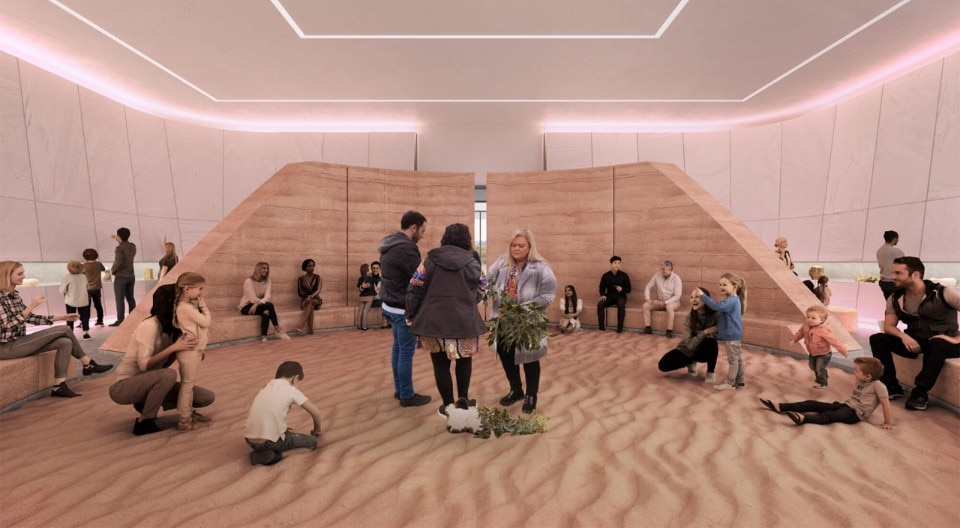
Australia presents 'HOME', an exhibition focusing on Australia's natural environment and Indigenous knowledge systems. Curated by Michael Mossman, Emily McDaniel and Jack Gillmer, the pavilion offers an immersive sensory experience focused on environmental stewardship and cultural heritage. Visitors will gain insights into Indigenous perspectives and be encouraged to reflect on sustainability and cultural resilience - key themes for the future of architecture and society.
Japan

 View gallery
View gallery
In ancient Japanese, there is a word that expresses the idea of people and the environment being on an equal footing: the term 'ma', meaning 'in between'. This is the very title of the Japanese pavilion at this year's Architecture Biennale. Curated by architect Jun Aoki, "In-Between" is an installation that, in line with Japanese culture, moves away from a human-centric vision to explore the role of artificial intelligence from a different perspective, imagining a more relational AI in the future.
France
"Vivre avec / Living with" is the name of the exhibition in the French Pavilion, designed by Jakob+Macfarlane, Martin Duplantier Architects and Eric Daniel Lacombe EDL. This light, temporary structure, made from recycled materials, will be located in the pavilion's park, which is currently under renovation. Designed as an inclusive, interactive space, it will host exhibitions, discussions and collaborations with architecture schools from France and abroad.
Latvia
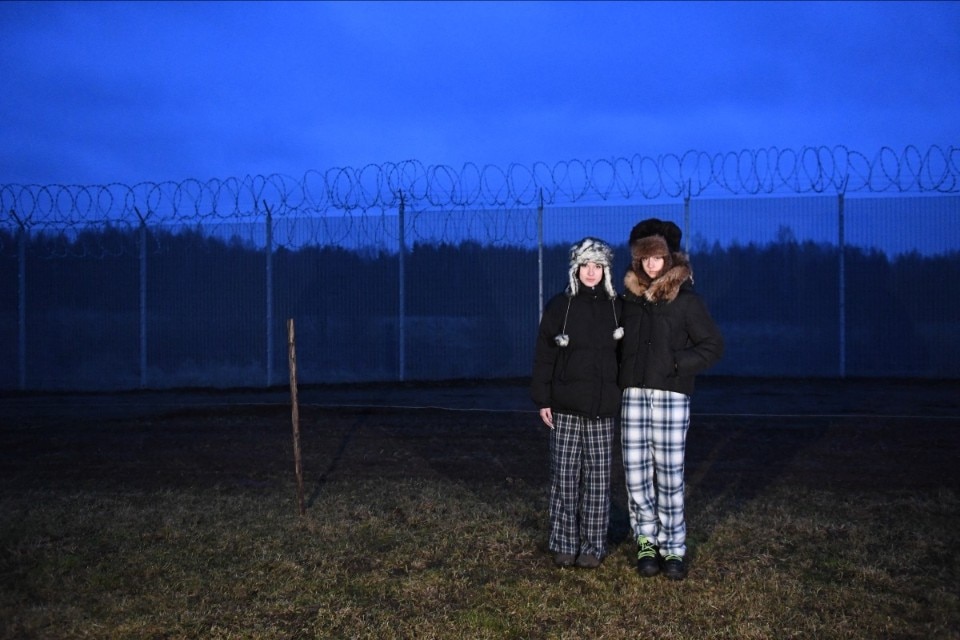
With Landscape of Defence, Latvia brings to the 2025 Biennale a reflection on the country's eastern border, now a frontline of geopolitical tension. Curated by Liene Jākobsone and Ilka Ruby, the pavilion explores the impact of defensive infrastructure on territories and everyday life, turning fear and fortification into architectural matter. Through an investigation of the military landscape between Latvia, Russia, and Belarus, the exhibition opens a debate on the role of architecture in social resilience and in shaping new geographies of security.
United Arab Emirates
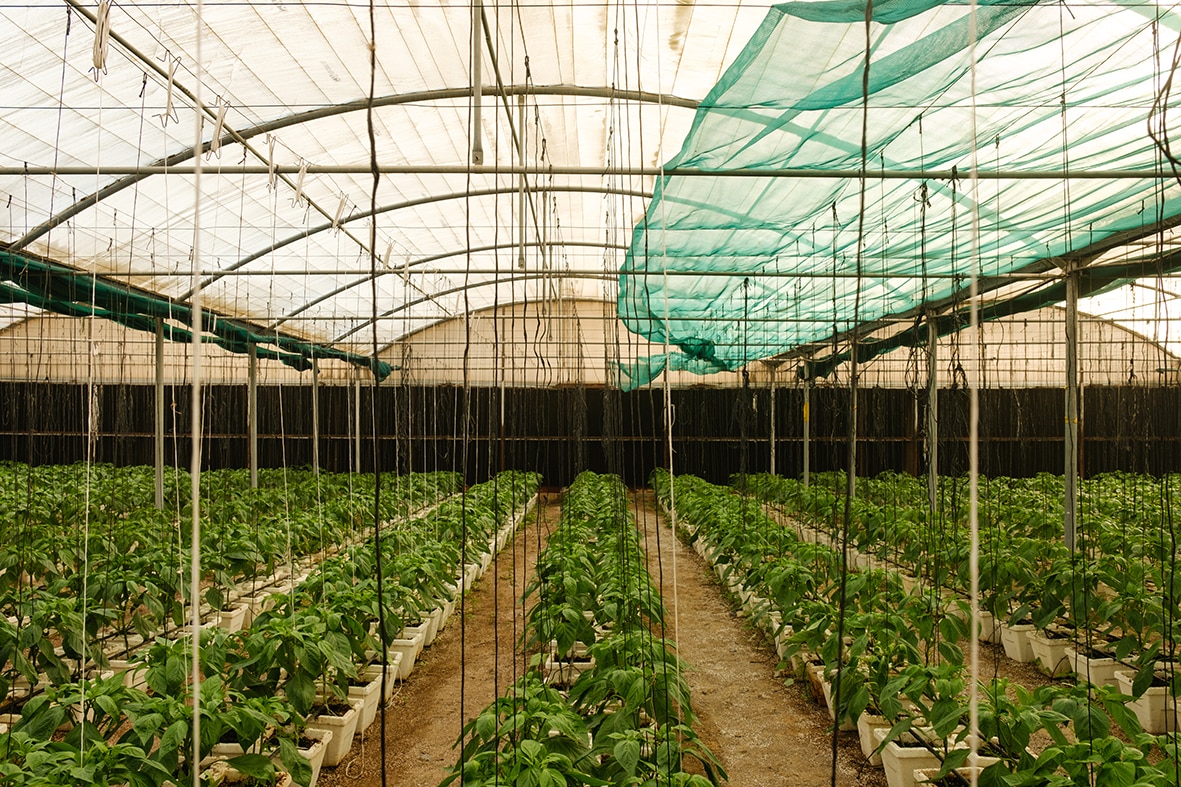
 View gallery
View gallery

UAE Pavilion
Corn fields and net houses in Liwa, Abu Dhabi
Ola Allouz, Pressure Cooker, 2024. Image courtesy of National Pavilion UAE – La Biennale di Venezia. Photo by Ola Allouz

UAE Pavilion
Greenhouses in Hatta, Dubai
Ola Allouz, Pressure Cooker, 2024. Image courtesy of National Pavilion UAE – La Biennale di Venezia. Photo by Ola Allouz.

UAE Pavilion
Greenhouses in Alzubair, Sharjah
Ola Allouz, Pressure Cooker, 2024. Image courtesy of National Pavilion UAE – La Biennale di Venezia. Photo by Ola Allouz

UAE Pavilion
Corn fields and net houses in Liwa, Abu Dhabi
Ola Allouz, Pressure Cooker, 2024. Image courtesy of National Pavilion UAE – La Biennale di Venezia. Photo by Ola Allouz

UAE Pavilion
Greenhouses in Hatta, Dubai
Ola Allouz, Pressure Cooker, 2024. Image courtesy of National Pavilion UAE – La Biennale di Venezia. Photo by Ola Allouz.

UAE Pavilion
Greenhouses in Alzubair, Sharjah
Ola Allouz, Pressure Cooker, 2024. Image courtesy of National Pavilion UAE – La Biennale di Venezia. Photo by Ola Allouz
Entitled 'Pressure Cooker', the exhibition is the first UAE pavilion to be curated by a woman: Azza Aboualam, an Emirati architect and assistant professor at Zayed University's College of Arts and Creative Enterprises. The exhibition examines food production infrastructures in the UAE and explores how architecture can contribute to innovative, integrated solutions for food security. " Using the UAE as a case study, how can architecture be mobilized towards greater food security?" asks Aboualam, a question the exhibition seeks to answer through research and case studies presented at the Biennale.
United Kingdom
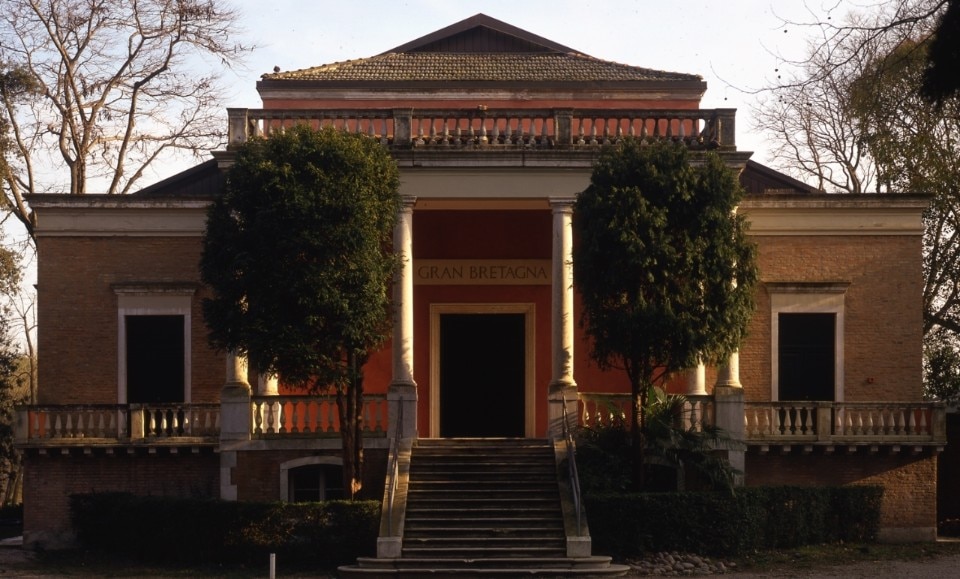
The British Pavilion, with the exhibition "GBR – Geology of Britannic Repair", explores the potential of architecture as a practice for repairing the environmental and colonial damage caused by geological extraction. The aim is to "turn the British Pavilion inside out," both physically and conceptually: from a space of national representation to a site of reflection on colonial history and its material legacies.
Curated by a UK-Kenya team, the exhibition takes inspiration from the Great Rift Valley and features site-specific installations by Cave_bureau, Mae-ling Lokko, Thandi Loewenson, and others. The works challenge dominant extractive models, proposing resilient, vernacular alternatives. The Pavilion thus becomes a critical space to reimagine architecture as an earthbound, ecological, and collective practice.
Turkey
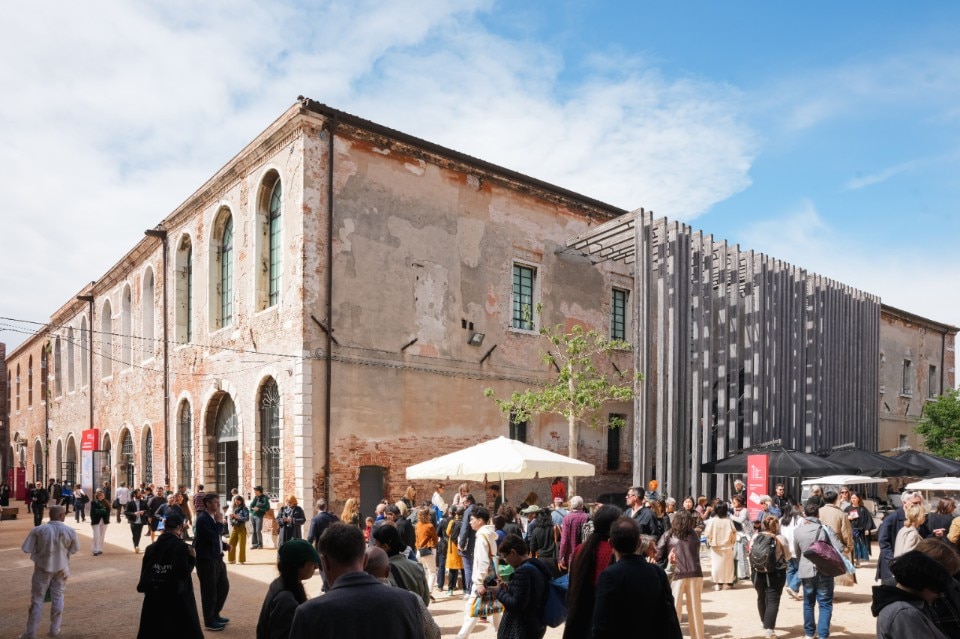
Curators Ceren Erdem and Bilge Kalfa focus on the theme of ground. "Grounded" explores soil as an essential element of life, memory and knowledge - often overlooked but rich in architectural potential. Combining sensory experience, scientific research, architecture and art, the exhibition examines the role of soil in connecting past and present, and proposes innovative approaches that integrate traditional building techniques with modern insights.
Estonia
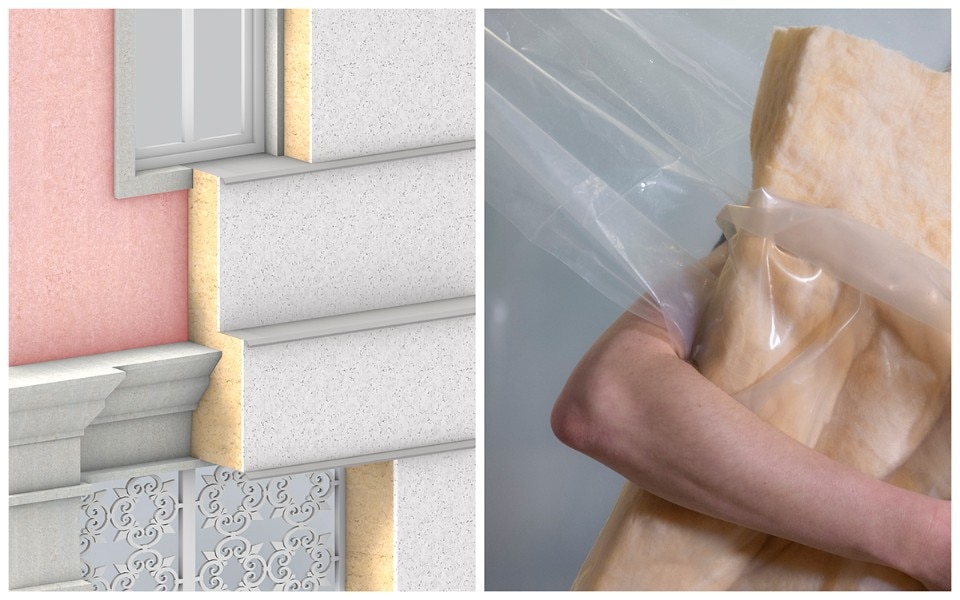
Taking the European Union's increasingly ambitious and necessary energy efficiency targets for buildings as a starting point, the Estonian pavilion attempts to strike a balance between housing needs and climate requirements.
"With this project, we ask ourselves whether insulation is merely a bureaucratic requirement to meet EU targets, or whether it can also address social and spatial challenges," comment Keiti Lige, Elina Liiva and Helena Männa, curators of the exhibition. "The installation highlights the contrast between ambitious global goals and the everyday reality of those who have to make collective decisions."
Austria
The Austrian Pavilion is tackling the housing crisis, following in the footsteps of Canada's 2023 "Not for Sale!" exhibition. "Agency for Better Living", explores the political dimensions of housing as a fundamental right. Curators Lorenzo Romito, Sabine Pollak and Michael Obrist examine the contrasting housing models of Vienna and Rome, comparing Austria's top-down approach with Italy's bottom-up practices.
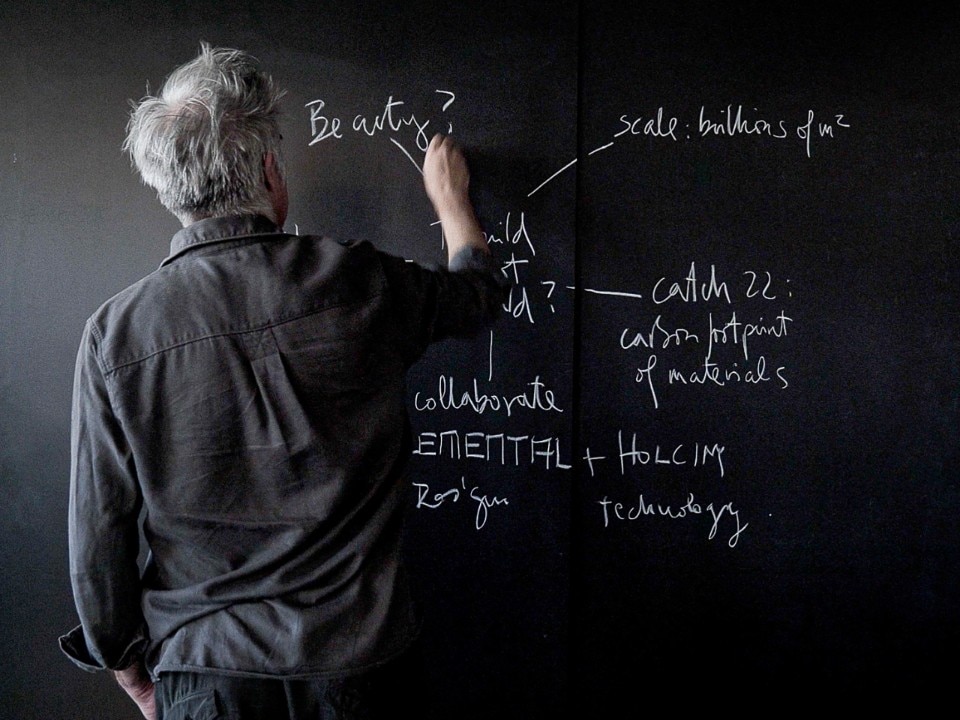
Exhibitions in the city
Each year, the Venice Architecture Biennale brings a series of side events that enliven the city and involve museums and foundations. One of the most anticipated this year is the AMO/OMA exhibition at the Prada Foundation in Venice, which explores the diagram as a tool for universal communication - not only in architecture, but also in major social and political processes.
Following the prototype created with Norman Foster for the 2023 Biennale, Holcim returns this year with Pritzker Prize winner Alejandro Aravena and his Elemental architecture studio to launch a resilient housing project with a zero carbon footprint, "in an effort to move towards a more sustainable human habitat".
For those who want to go beyond the Biennale, Domus has selected all the must-see exhibitions.
Who is Carlo Ratti
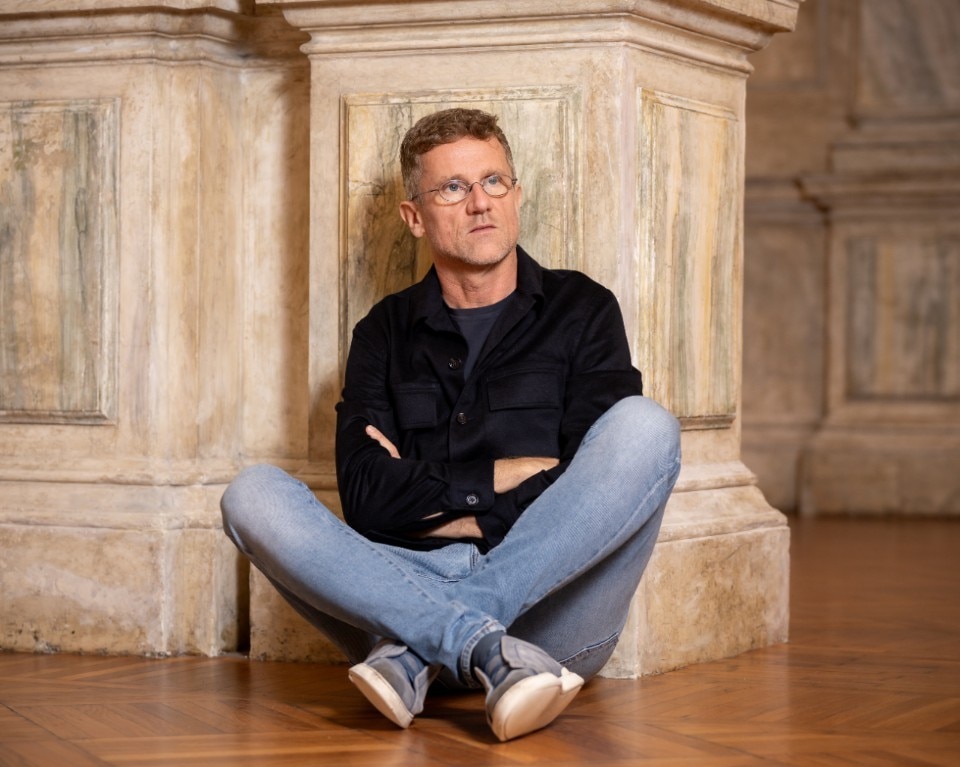
Curator of the Venice Architecture Biennale 2025, Carlo Ratti has a background in architecture and engineering and teaches at the Massachusetts Institute of Technology (MIT) and the Politecnico di Milano. In addition to his academic work, he is the director of the Senseable City Lab and a founding partner of the architecture firm CRA-Carlo Ratti Associati, with offices in Turin, New York and London. This year he will also be curating the French Pavilion at Expo 2025 in Osaka, in collaboration with the Coldefy architectural studio.


